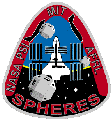 The deadline for nominations is April 1, 2013. The nomination form should be completed early enough to ensure that the nominated teacher is given enough time to thoroughly prepare an application that reflects exemplary teaching prior to the application deadline. Applications are due by May 1, 2013.
The deadline for nominations is April 1, 2013. The nomination form should be completed early enough to ensure that the nominated teacher is given enough time to thoroughly prepare an application that reflects exemplary teaching prior to the application deadline. Applications are due by May 1, 2013.
Nominate outstanding secondary, grades 7-12 mathematics and science (including computer science) teachers now for the 2013 awards.
The Presidential Awards for Excellence in Mathematics and Science Teaching (PAEMST) are the highest honors bestowed by the United States government specifically for K-12 mathematics and science (including computer science) teaching. Established by Congress in 1983, the PAEMST program authorizes the President to bestow up to 108 awards each year.
Awards are given to mathematics and science (including computer science) teachers from each of the 50 states and four U.S. jurisdictions. The jurisdictions are Washington, D.C.; Puerto Rico; Department of Defense Education Activity schools; and the U.S. territories as a group (American Samoa, Guam, the Commonwealth of the Northern Mariana Islands, and the U.S. Virgin Islands).
The award recognizes those teachers who develop and implement a high-quality instructional program that is informed by content knowledge and enhances student learning. Since the program’s inception, more than 4,200 teachers have been recognized for their contributions in the classroom and to their profession.
Awardees serve as models for their colleagues, inspiration to their communities, and leaders in the improvement of mathematics and science (including computer science) education. The National Science Foundation administers PAEMST on behalf of The White House Office of Science and Technology Policy.
Visit the Presidential Awards website for additional information, to nominate someone, or to apply.

 On Friday, Jan. 11th, high school students from around the world joined in fierce competition to claim the championship spot in the Synchronized Position Hold, Engage, Reorient, Experimental Satellites, or
On Friday, Jan. 11th, high school students from around the world joined in fierce competition to claim the championship spot in the Synchronized Position Hold, Engage, Reorient, Experimental Satellites, or  Are you or your students (ages 13 years or older) curious about our nearest star, moon rocks, volcanoes and other wonders of the universe? Come to the Smithsonian’s Stars, a series of 10 lectures by Smithsonian researchers who are exploring the sun, the moon, planets, stars, galaxies and the universe. These speakers will share behind-the-scenes details about how their research is done and technologies that advance new discoveries at the Smithsonian Institution.
Are you or your students (ages 13 years or older) curious about our nearest star, moon rocks, volcanoes and other wonders of the universe? Come to the Smithsonian’s Stars, a series of 10 lectures by Smithsonian researchers who are exploring the sun, the moon, planets, stars, galaxies and the universe. These speakers will share behind-the-scenes details about how their research is done and technologies that advance new discoveries at the Smithsonian Institution.